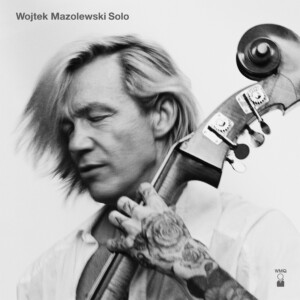Stephen Lands Rearranging the Planets (self-released)
For longer than recorded history, mankind has looked to the cosmos for answers and insights. Such astral projection provided rich material for composer Gustav Holst, whose masterwork The Planets premiered in 1918. And it is Holst’s seven-part suite that has inspired New Orleans trumpet player, composer and arranger Stephen Lands’ own Rearranging the Planets, which takes a fresh look at the music and mythos associated with stargazing.
While jazz composer and band leader Sun Ra was preoccupied with space travel and its implications, particularly for Black people, his vision was directed outward into the universe. Lands directs that vision back toward Earth and its occupants, and seeks to extend our view of astrology beyond the Eurocentric antecedents that dominate our Zodiac. “Modern popular astrology is primarily Greco-Roman,” he writes on his Bandcamp page. “It was introduced to the Western world when Alexander the Great conquered Central Asia, Syria, Babylon and Persia. The questions were as clear as day to me: Where and what was it before?”
How, for example, did the ancient peoples of Senegal or Nigeria interpret the night sky, with their corresponding mythologies?
This is what Lands and his ensemble set out to explore, weaving African rhythms and textures into their modern jazz interpretations. The leader’s sinewy trumpet shares the front line with tenor saxophonist Gladney and alto/bari saxophonist-flutist Amari Ansari, and receives stellar support from pianist/keyboardist Shea Pierre, guitarist John Maestas, bassist Max Moran and the dual drumming engine of Alfred Jordan Jr. and percussionist Xavier Molina. Sultry spoken word performance by Amber René adds a poetic dimension — “Cowrie shells and beads of gold spring together in a gentle applause/Furs with silks as orange as the setting sun draped across rivers of deep brown” she intones on “Thunder Robes, Bronze Crown Part 1” — and she and fellow vocalists Meghan Stewart and Sélène Saint-Aimé further layer the sonic palette.
That palette is firmly rooted in the soul-jazz tradition of the late 1960s and early ’70s, with an engaging mix of synth bass, chiming electric keyboards and electric guitar riffs complementing the harmonizing horns and roiling drums. The overall effect is at once sensual and searching, looking outward and inward, upward and earthward in a way that makes listeners re-examine what they thought they knew about human engagement with the stars.
— Bob Weinberg
Photo by: Noe Cugny



